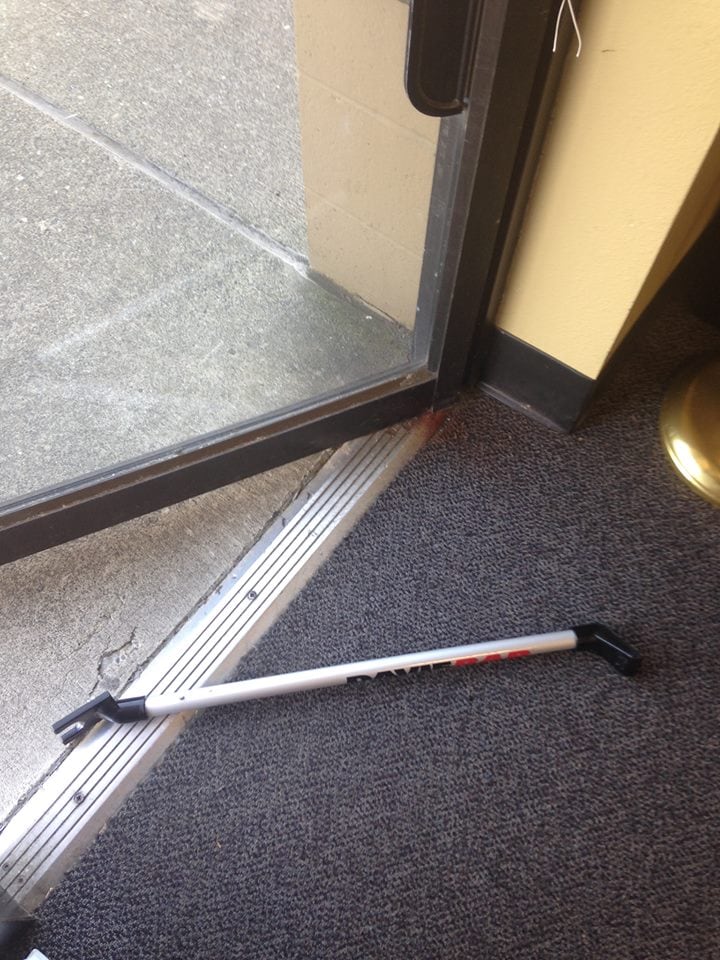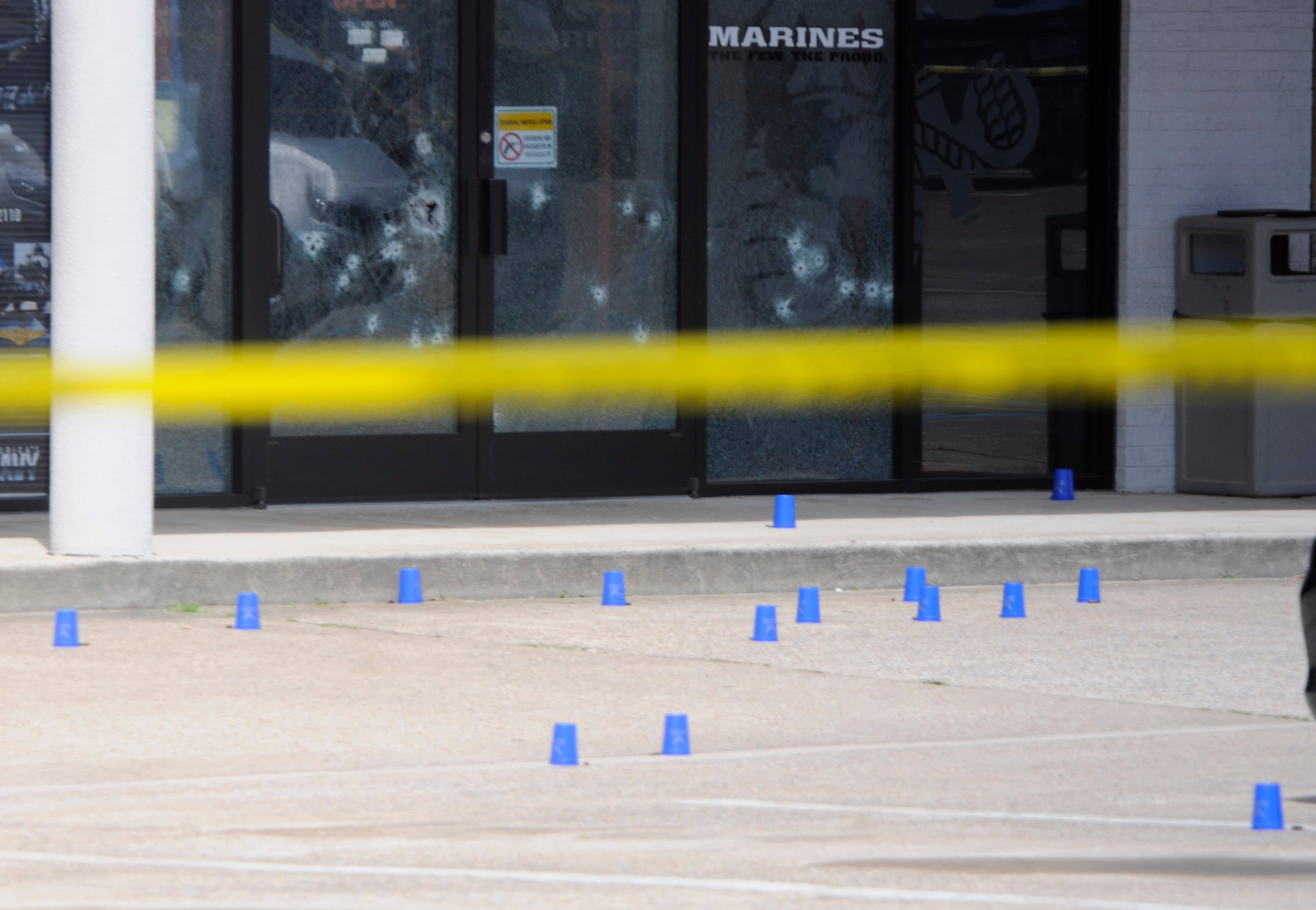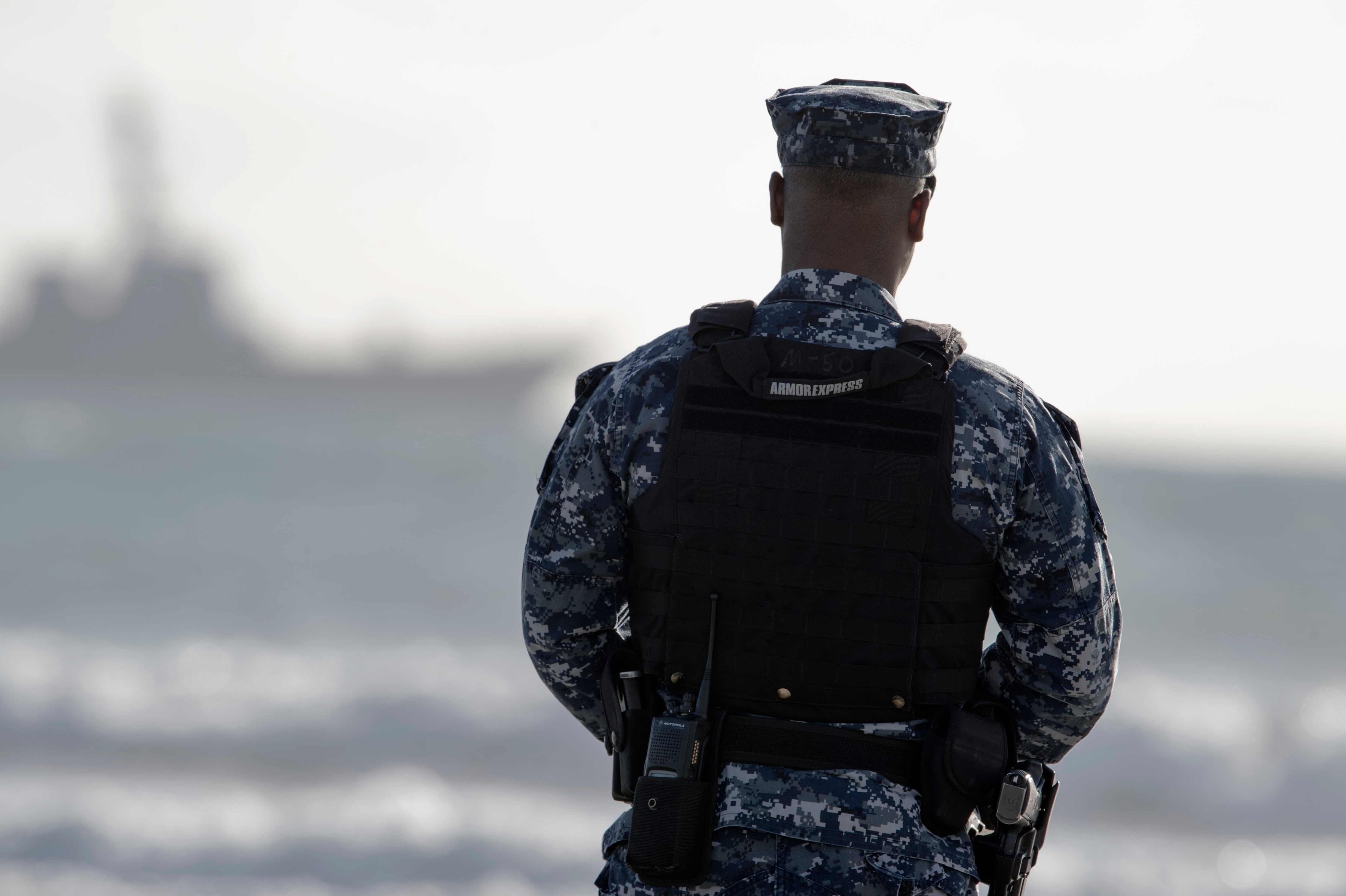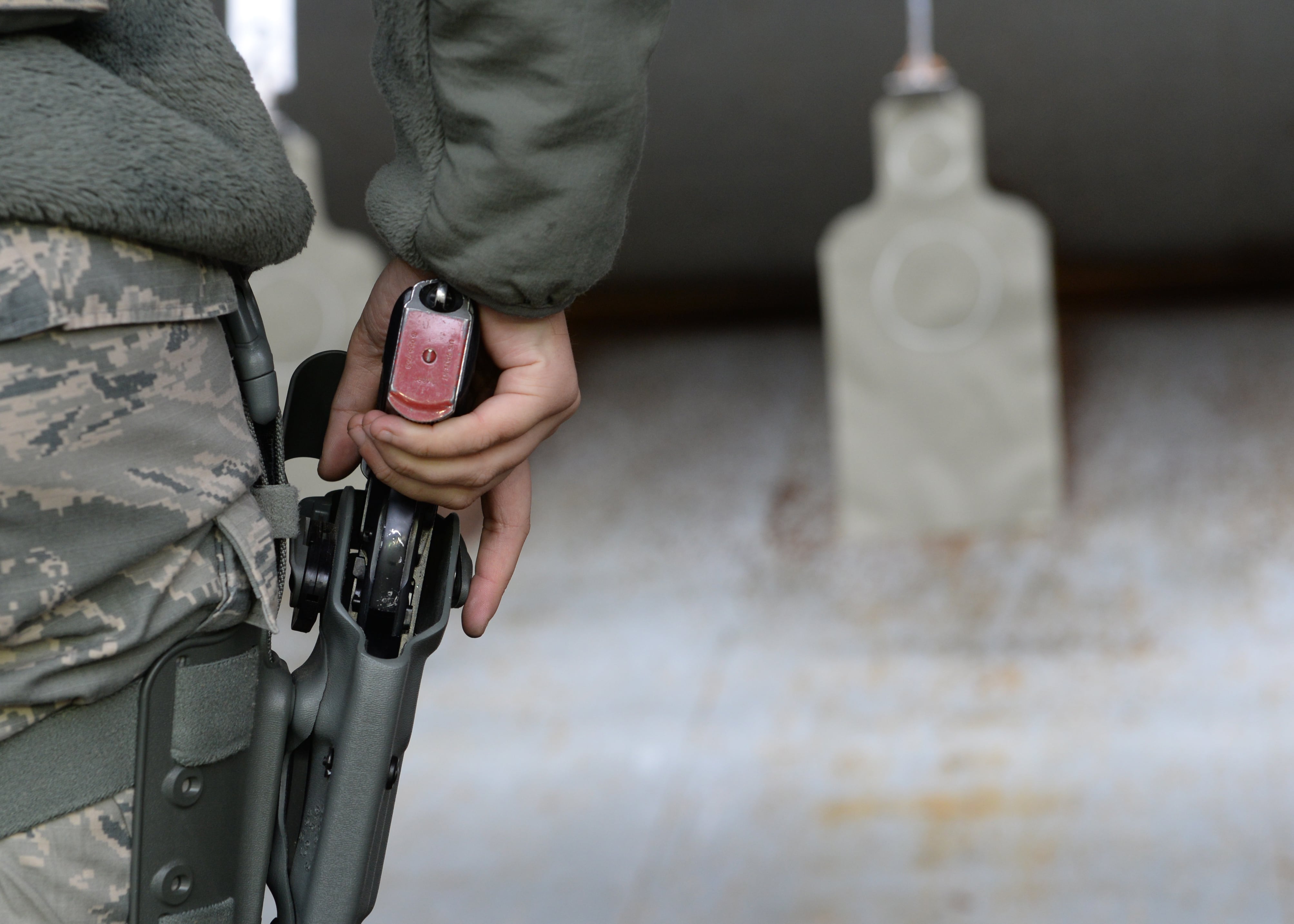A year after four Marines and a sailor were killed in a lone wolf-style terror attack on a Thursday morning in Tennessee, the Defense Department is still grappling with how best to protect troops at outlying facilities.
The issue has preoccupied top Pentagon officials since the July 2015 attack by an American-born Muslim at a recruiting station and reserve center in Chattanooga. But so far, there have been no changes to Defense Department policies.
Military commanders have adopted a patchwork of approaches to the controversial question of whether troops — especially recruiters — should carry more guns to protect against terrorist-style shootings at their workplace. Each service have also taken varied steps to harden what some call "soft targets," by giving recruiters ballistic barriers they can hide behind or tools to jam doors.
The Army and the Marine Corps have signaled a deep reluctance to arm recruiters, citing the need to ensure that recruiting stations are welcoming places to greet the public without intimidating security measures.
At the same time, the Air Force and the Navy are pushing ahead with policies to put more guns in the hands of more troops as added security measure against the threat of "active shooters," who collectively have killed at least 40 troops in several attacks since 2009.

A Marine recruiter said his office received a Davie Bar door jamming device months after an attack on two military facilities in Tennessee. The device is useless, the recruiter said, as their office door opens in both directions.
Photo Credit: Courtesy
The year-long debate has left some frustrated. One Marine recruiter said he feels that the "higher ups are more concerned about being politically correct than taking care of its Marines." They waited months for better security measures at his recruiting station, he said, only to receive a device called a "Davie Bar" that can jam doors.
They quickly discovered a major problem with the design, though: Their office door swings both ways, leaving the device effectively useless.
"As a recruiter on the street, I look over my shoulder now," he said, speaking on the condition of anonymity, "and this is the best our command has done for us. It's just wrong."
On the one-year anniversary of the attack, there will be events held in Chattanooga to honor the five men killed in the shootingsattacks: Gunnery Sgt. Thomas Sullivan, Staff Sgt. David Wyatt, Sgt. Carson Holmquist, Lance Cpl. Squire K. Wells and Navy Logistics Specialist 2nd Class Randall Smith.
Here's a look at what has changed — and what hasn't — one year later.
Since the shootings, Congress has pressured the Pentagon to allow more troops to carry weapons. But some top military officials have explicitly opposed that, preferring instead to rely on alternative security measures or improving mass-notification systems for active-shooter incidents.
After the attack, Defense Secretary Ash Carter launched a sweeping review of the Pentagon's rules for personal firearms. But the effort to draw up new guidelines has been fraught with legal and safety concerns. It is not likely to be wrapped up before September.
"We are nearing completion of our final review," Army Maj. Jamie Davis, a Pentagon spokesman, told Military Times. "The new policy will be published within a couple of months.
The new policy will address:
- Distinctions between on-base security concerns and those at off-post work sites such as recruiting stations, reserve centers.
- The legal and safety issues related to government-issue weapons versus personally owned firearms.
- How to align commanders’ policies with state-level and local gun laws as well as restrictions imposed by landlords on leased properties.
Despite the delay in high-level policy making, some military services and individual commanders have begun implementing new programs and procedures to arm more troops. The result is a hodgepodge of new rules that rely on a slate of older and ambiguous policies on the use of personal firearms.
The Chattanooga shootings offered a window on the real-world impact of arming more troops. While sailors at the Navy Operational Support Center in Chattanooga were prohibited from carrying weapons, Lt. Cmdr. Tim White, the commanding officer there, disregarded that rule.
White had started bringing his personal handgun to the reserve after Islamic State-group militants started threatening to attack service members, according to sources who spoke to Navy Times after the shooting.
When the heavily armed shooter crashed the gate of the NOSC and headed towards the entrance, he was waylaid by White, who fired several rounds and forced the shooter to pause and regroup.
Survivors who spoke to Navy Times were clear: White's actions delayed the shooters advance on the unarmed NOSC, and that saved lives.
"That naval commander doing his portion to throw the guy off — it gave us a little bit more time," Gunnery Sgt. Matthew Doll, a Mike Battery Marine who witnessed the attack. "Any type of throw-off as an enemy going in to do what they are going to do — any disruption will change the plan."
The Defense Department spent about $80 million on security improvements for recruiting stations in 2016, with more money allocated in fiscal 2017. Also in the works is a military-wide alert system that will inform troops about attacks in their area.
Marine officials are ruling out arming recruiters.
"In an attempt to balance risk-to-mission versus risk-to-force, we continue to rule out arming recruiters and believe an acceptable balance is achieved through other comprehensive lines of effort we are pursuing," said Jim Edwards, a spokesman for Marine Corps Recruiting Command.
It's a move Commandant Gen. Robert Neller supports, said Lt. Col. Eric Dent, his spokesman. Though Neller does support commanders' decisions to provide "dynamic security, including arming Marines, when appropriate," Dent said.
"Commanders have already armed qualified Marines at Reserve sites and military facilities where additional protection and security is warranted," Dent added.
Reviewing force protection measures at recruiting offices remain "an enduring effort," Edwards said. Though he declined to provide examples of specific measures they've taken to make recruiting offices safer, Edwards said they drastically improve protection in a post-Chattanooga environment.
But some recruiters say the Marine Corps hasn't gone far enough. A recruiter working at a Midwest station said the doors in his office aren't strong enough to stop a determined attacker from getting in.
"I got to lock a glass door, which they can kick through," the recruiter told Marine Corps Times. "Then I'm stuck in a corner with no way out. Where am I supposed to go?"

The gunman who opened fire on a Chattanooga, Tenn. recruiting office on July 16 was only about 5 feet from the front windows, according to a newly released report.
Photo Credit: Tim Barber/Chattanooga Times Free Press via AP
The Marine Corps has more than 1,500 Marine recruiting stations, and each is unique with different security needs, Edwards said. Lt. Col. John Caldwell, another MCRC spokesman, said some security measures, like the issuance of the Davie Bars, is being handled locally. Those devices were only issued to recruiting stations in the Marine Corps' 9th Recruiting Distinct, which covers the Midwest, he said. National-level measures will continue through fiscal 2018, he added.
Additionally, Marine recruiters are receiving training and education, Edwards said, as each facility is individually evaluated for physical security and contingency procedures.
Still, recruiters say allowing them to keep a firearm in a locked safe could save lives.
"They're afraid of a negligent discharge or stuff like that," the Midwest-based recruiter said. "But if you have it in a safe and you only pull it out when you have to use it, I think that'd be a little more efficient and not [pose] as much harm to the outside world."
Armed sailors will soon be standing watch at Navy recruiting stations nationwide.
The move follows a broad investigation of the security of Navy buildings outside major bases, such as reserve centers and recruiting stations.
Immediately following the attack in Chattanooga, Adm. Phil Davidson, the head of Fleet Forces, ordered armed guards to start patrolling all 71 NOSCs across the country. Those sailors, mostly activated reserve masters-at-arms, were in place within weeks.

Master-At-Arms 3rd Class Anthony Dodson stands watch as the guided-missile destroyer Stockdale sits anchored off the southern coast of California. The Navy plans to boost its number of security personnel in 2017.
Photo Credit: Petty Officer 2nd Class Timothy/Navy
In 2017, the Navy Department will hire about 750 more full-time security personnel, along with an addition 50 security officers to police its bases — a more-than 25-percent boost to that career field.
White, who used his personal firearm to defend his base, said he is pleased with the progress the Navy has made on security in the wake of last year's shooting. Having armed guards at the NOSCs is huge shift, and they expect construction to start on new anti-terrorism force protection improvements by October, he said.
While there is always a sense of wanting it done faster, White said the Navy's response to what happened to his command has been encouraging.
"Of course the emotional response would be 'I want these things done right now,'" he said. "We are still fighting a war on terrorism overseas and this is on top of all that. But the progress that has been made just in a year, it's showed the Navy's commitment to making sure their sailors safe both at home and abroad."
Air Force leaders have implemented three programs that allow more airmen to carry weapons in the workplace.
Since the attacks in Chattanooga, more than 35 installations have implemented one of the three programs, said Air Force spokeswoman Ann Stefanek.
Unit Marshal, the newest of the three programs, gives hand-selected airmen permission to work with security forces that train them to open carry an M9 pistol in their duty location. Security Forces Staff Arming enables more security forces members — who have the appropriate Air Force specialty code and who work in staff billets at the squadron, group, wing or major command — to carry a government-issued weapon while on duty with the approval of the installation commander. That program is similar to the Law Enforcement Officer Safety Act program, which allows service members with civilian law enforcement jobs to carry personal weapons on military installations without violating DoD or federal laws.

While Air Force officials won't say whether any recruiters are armed, more airmen are allowed to carry weapons under new programs developed after the terror attacks in Chattanooga, Tenn.
Photo Credit: Airman 1st Class Nathan Clark/Air Force
Base commanders have the authority to use more than one of those programs amid security concerns.
"Our programs are ... providing training and guidance that balances safety with the need to deliver additional security by providing additional armed personnel as they deem necessary," said Air Force spokeswoman Laura McAndrews.
Air Force officials declined to specify whether any recruiters currently carry weapons.
"Options are currently being reviewed and implemented in a tailored approach to balance the safety of our recruiters and those that enter our offices with public access to recruiters," said 1st Lt. Erin Ranaweera, a spokeswoman for the Air Force Recruiting Service.
Recruiters are also trained annually on force protection, and routinely conduct tabletop and hands-on training exercises based that prepare them to react quickly in a crisis, she said. Recruiters also build relationships with local authorities such as police officers, and have developed action plans for their offices, she added.
The Army's current policy prohibits soldiers from bringing guns into the services 1,400 recruiting stations — even if the service members have state-issued permits to carry concealed weapons.
"At this point we are not arming our recruiters," said Kelli Bland, an Army recruiting spokeswoman.
"But ... there are many other force protection elements that we have put in place over the past year to make sure we're plussing-up on our security," she added, citing changes to recruiting station's entrance ways and other physical security measures.
The decision to keep recruiters unarmed reflect the views of the Army's top officer.
"I've been around guns all my life," Army Chief of Staff Gen. Mark Milley told members of Congress in April. "I know how to use them. And arming our people on our military bases and allowing them to carry concealed, privately owned weapons — I do not recommend that as a course of action."
Andrew Tilghman is the executive editor for Military Times. He is a former Military Times Pentagon reporter and served as a Middle East correspondent for the Stars and Stripes. Before covering the military, he worked as a reporter for the Houston Chronicle in Texas, the Albany Times Union in New York and The Associated Press in Milwaukee.





